Digital Poster
Blood Vessels I: Perfusion (non-ASL) & Other Techniques
ISMRM & ISMRT Annual Meeting & Exhibition • 10-15 May 2025 • Honolulu, Hawai'i

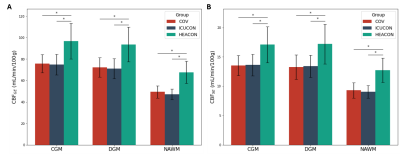 |
Computer Number: 113
1769. EXPLORING
THE UNDERLYING MECHANISMS OF CHRONIC CEREBRAL BLOOD FLOW
DEFICITS IN COVID-19
N. van der Knaap, P. Voorter, B. van Bussel, I. van der
Horst, J. Staals, R. van Oostenbrugge, W. Backes, D. Linden,
J. Jansen, M. Ariës
Maastricht University Medical Center, Maastricht, Netherlands
Impact: Our findings suggest that chronically reduced
CBF was not accompanied by altered microvascular
architecture. Chronically reduced capillary perfusion was,
however, preceded by hypercoagulation during the ICU period.
The observed CBF deficits do not seem COVID-19-specific.
|
|
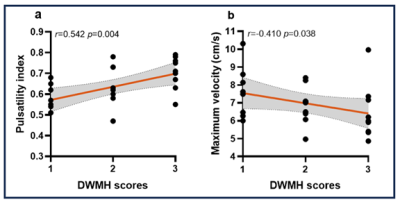 |
Computer Number: 114
1770. The
Correlation between Deep White Matter Hyperintensity and
Hemodynamic Measurements of Perforating Arteries in Patients
with CSVD
T. Chen, X. Pei, X. Zhang, Y. Zhao, Y. Li, Y. Yang, Y. Shi,
Y. Wang, B. Sui
Tiantan Neuroimaging Center of Excellence, China National Clinical Research Center for Neurological Diseases, Beijing, China
Impact: Understanding the correlations between the
hemodynamic measurements of the perforating arteries and the
severity of DWMH may help to further understand the
mechanism of cerebral white matter hypersensitivity.
|
|
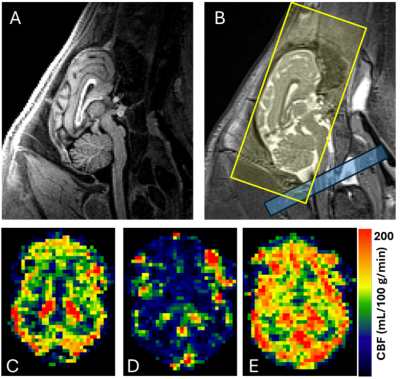 |
Computer Number: 115
1771. Regional
Cerebral Perfusion after Automated Head-Up Cardiopulmonary
Resuscitation using MRI
A. Metzger, X. Li, J. Moore, P. Pourzand, C. Lenglet, H.
Farooq, D. Koski, B. Salverda, M. Suresh, H. Hai, K. Lurie,
G. Metzger
University of Minnesota, Minneapolis, United States
Impact: The impact of active head up CPR on regional
cerebral perfusion after return of spontaneous circulation
will improve our understanding of the mechanisms responsible
for the neurological survival benefits compared to
conventional CPR.
|
|
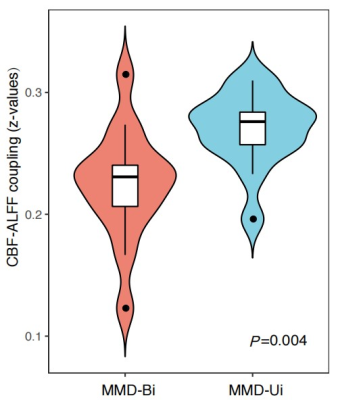 |
Computer Number: 116
1772. Comparison
of brain structure and function in adult patients with
unilateral versus bilateral asymptomatic moyamoya disease
R. Hu, J. Lyu, Q. Duan, R. Li, C. Duan, S. Wang, X. Lou
Department of Radiology, The First Medical Center of Chinese PLA General Hospital, Beijing, China
Impact: The decision regarding clinical intervention is
complex for certain asymptomatic MMD cases. We investigated
the structural and functional abnormalities in adults with
unilateral and bilateral asymptomatic MMD, thereby
establishing an imaging foundation for the informed
selection of clinical interventions.
|
|
 |
Computer Number: 117
1773. Cerebrovascular
reactivity dynamics in the postpartum period: a pilot study
J. Pinto, S. Suri, S. Sparks, G. Hayes, D. Bulte
Institute of Biomedical Engineering, Department of Engineering Science, University of Oxford, Oxford, United Kingdom
Impact: This is the first MRI study investigating
cerebrovascular reactivity changes in the postpartum period.
Significant differences in reactivity timing were observed
in specific regions of the brain known to be related to
salience/reward networks and emotion processing.
|
|
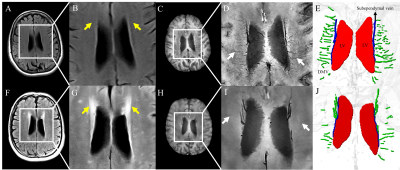 |
Computer Number: 118
1774. Deep
Medullary Vein Density are associated with Paraventricular White
Matter Hyperintensities and Brain Atrophy: An Automated Analysis
of SWI
S. Maharjan, L. Alkhoury, X. Wang, L. Zhou, T. Butler, Y.
Li, E. Tanzi, G. Chiang, M. de Leon, L. Glodzik
Weill Cornell Medicine, New York, United States
Impact:
This study underscores the importance of venous health in CSVD, relating reduced DMVs density with PWMH pathology and brain volume, thus providing a potential additional biomarker for neurovascular pathology. |
|
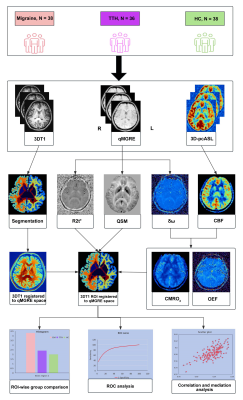 |
Computer Number: 119
1775. Exploring
the Utility of Quantitative MGRE in Distinguishing Migraine and
Tension-Type Headache: A Pilot Study
Y. Yang
The First Affiliated Hospital of USTC, Division of Life Sciences and Medicine, University of Science and Technology of China, hefei, China
Impact: Our findings not only may serve as neuroimaging
biomarkers to diagnose and predict in the two disorders, but
also may ultimately be used in clinical performance by
improving pain severity through depression regulation.
|
|
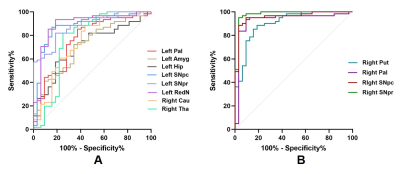 |
Computer Number: 120
1776. Iron
deposition in deep nuclei associated with cognitive function in
cerebral small vessel disease: A quantitative susceptibility
mapping study
M. Feng, X. Liu, S. Zhang, B. Xu, J. Lu
Department of Radiology and Nuclear Medicine, Xuanwu Hospital, Capital Medical University, Beijing, China
Impact: It demonstrates the association between iron
deposition in deep nuclei and cognitive dysfunction in CSVD,
providing evidence for iron deposition in specific regions
as a diagnostic marker and insight into the mechanisms of
cognitive dysfunction, which guide future therapeutic
strategies.
|
|
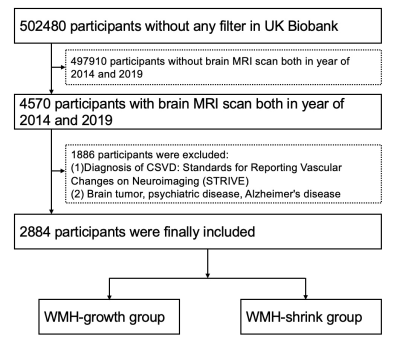 |
Computer Number: 121
1777. Risk
factors for the progression of white matter hyperintensity (WMH)
in the patients with small vessel disease (CSVD)– A UK Biobank
study
X. Han, Y. Hu, X. Gu, X. Yu, Y. Zhou
Department of Radiology, Renji Hospital, School of Medicine, Shanghai Jiao Tong Universit, shanghai, China
Impact: Our study highlights intricate relationships
between clinical factors, imaging markers, and WMH
progression.
|
|
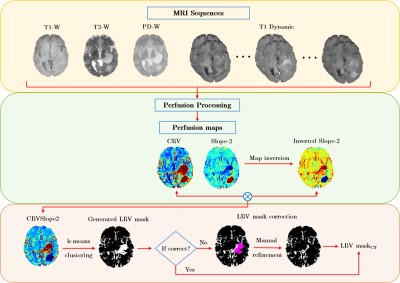 |
Computer Number: 122
1778. Large
Blood Vessel Segmentation using Swin Transformers for Improved
Quantitative DCE-MRI of Gliomas
A. Kesari, S. Maurya, M. Sheikh, R. Gupta, A. Singh
Indian Institute of Technology Delhi, New Delhi, India
Impact:
The proposed transformer based LBV segmentation algorithm can aid radiologists in achieving more objective and accurate tumor assessment, potentially overcoming limitations associated with manual or semi-automatic segmentation techniques. |
|
 |
Computer Number: 123
1779. Application
of Dynamic Contrast-Enhanced MRI in Assessing Blood-Brain
Barrier Permeability in SLE Patients
X. Zhao, Y. Sun, W. Meng, S. Wang, L. Zhou
The Second Hospital of Hebei Medical University, Shijiazhuang City, China
Impact: This study leverages DCE-MRI to assess BBB
permeability across varying levels of SLE severity,
exploring its association with neuropsychiatric impairment.
These findings highlight DCE-MRI's potential as an imaging
marker for early observation of BBB alterations in SLE
patients.
|
|
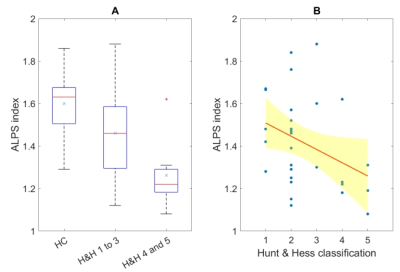 |
Computer Number: 124
1780. Diffusion
along perivascular spaces index in patients after subarachnoid
hemorrhage
P. Ulloa, J. Rudolf, A. Schmidt, J. Küchler, P. Schramm
Universitätsklinikum Schleswig-Holstein, Lübeck, Germany
Impact: We did not observe any interhemispheric
differences in SAH patients and controls according the
ALPS-index. Additionally, the ALPS index of SAH patients was
lower than in controls, and there might be a negative
correlation between the index and Hunt&Hess grading.
|
|
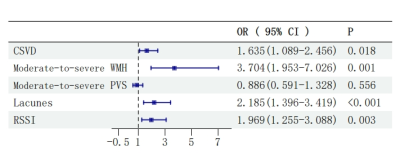 |
Computer Number: 125
1781. Association
Analysis of Systemic Inflammatory Response Index with Cerebral
Small Vessel Disease and Imaging Biomarkers
T. Zhuang, L. Han, Y. Cheng, Y. Zhang
Ningbo Medical Center LiHuiLi Hospital, Ningbo, China
Impact: These findings suggest that SIRI may serve as an
inflammatory marker involved in CSVD development.
|
|
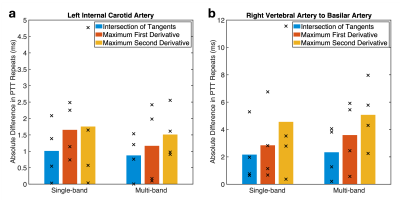 |
Computer Number: 126
1782. Comparison
of single-band versus multi-band phase contrast MRI for the
estimation of pulse transit time as a measure of neurovascular
stiffness
B. Keedwell, A. Hess, T. Okell, I. Dragonu, Y. Ji, M. Chiew,
P. Jezzard
University of Oxford, Oxford, United Kingdom
Impact: Phase contrast MRI scans for the assessment of
neurovascular stiffness can be accelerated by a factor of
five through a simultaneous multi-slice acquisition without
a significant difference in the reproducibility of pulse
transit time measurements.
|
|
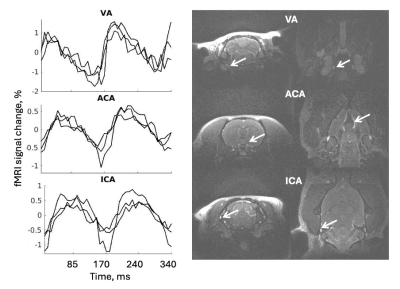 |
Computer Number: 127
1783. Vascular
pulsations in the rat brain visualized by EVEnt-Recurring ZTE
(EVER-ZTE)
E. Paasonen, P. Stenroos, R. Salo, M. Kettunen, S. Michaeli,
S. Mangia, J. Paasonen, O. Gröhn
University of Eastern Finland, Kuopio, Finland
Impact: EVER-ZTE enables the robust detection of brain
vascular pulsations in preclinical settings, providing a
unique opportunity to measure non-invasively critical
physiological parameters linked to brain health at the same
time with traditional fMRI measurement.
|
|
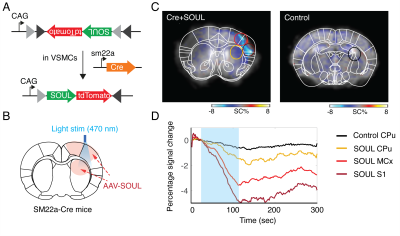 |
Computer Number: 128
1784. BOLD
MRI response to optogenetic activation of cerebral blood vessel
cells in intact mouse brains
R. Yang, M. Rathnayaka, J. Wansapura, N. Li
UT Southwestern Medical Center, Dallas, United States
Impact: This work is the first to showcase the use of an
ultrasensitive opsin to modulate hemodynamic signals
transcranially without the need for invasive optical cannula
implantation, marking a significant advancement in
non-invasive genetically targeted hemodynamic modulation
strategies.
|
The International Society for Magnetic Resonance in Medicine is accredited by the Accreditation Council for Continuing Medical Education to provide continuing medical education for physicians.